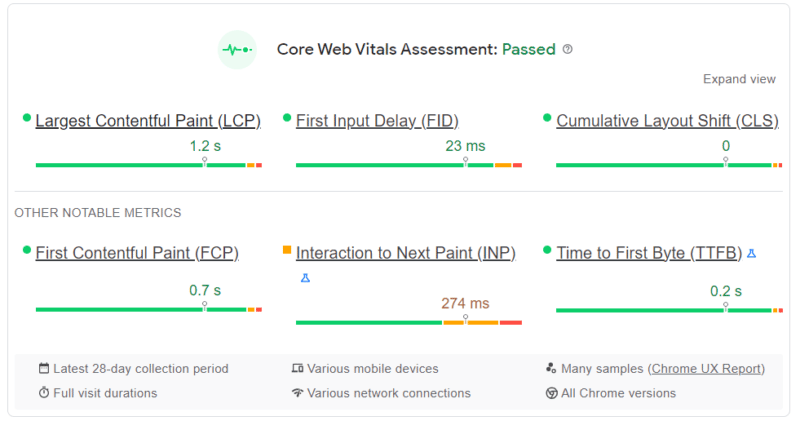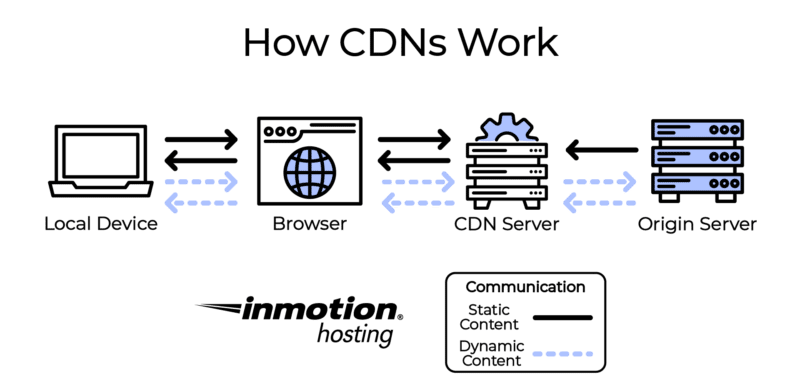
A fast website is a crucial part of improving your SEO ranking; however, guides often give blanket statements about optimization and what it can do for your website, or go into more technical aspects that may overwhelm some users.
This article will provide you with the most basic steps to improve the performance of your website without going deep into the code.
WordPress websites and optimization
Site speed more important than ever, end users will abandon websites if page or asset load time takes more than a couple of seconds, so every moment counts to capture your audience’s attention and maintain your rate of conversion
One of the most common concerns with a portion of the WordPress community is content management system (CMS) speed.
This push for faster websites was one of the reasons why Performance team it was created by the community as there was a fear that WordPress was falling behind some of its competitors.
While new integrations are being added to WordPress core, the good news is that many of the lightning fast websites use WordPress as their CMS, and if you’re having trouble with yours, it could be easily fixed with the tips below.
1. Test your site speed often
The first step to improving your website speed is to test it to see what can be improved.
There are hundreds of tests to choose from online when testing performance, but we’ll focus on Google Web Core Vitals and Lighthouse Reports.
Google Core Web Vitals
Started by Google, Core Web Vitals is one of the biggest speed test sites on the internet today, giving you information on the different fields affecting your website.

Currently, Core Web Vitals is very focused on user experience, with measures such as load performance, interactivity and visual stability; however, it is expressly stated that these factors may change in the future.
Lighthouse report
If you are familiar with GTMetrix and other popular free speed test tools you’ve been using Lighthouse Report Technology. It’s an open source technology, also from Google, that breaks the speed of your website.
Just like Web Core Vitals, this report is incredibly comprehensive and will provide a breakdown of the issues that could be slowing down your page, from overall performance, accessibility, best practices, and SEO.
2. Change the PHP version
PHP (Hypertext Preprocessor), is the coding language on which WordPress is based. This means that as WordPress grows in versions, it will need the latest version of this scripting language.
Fortunately, WordPress has a PHP warning if it thinks your current version of the CMS is not supported or needs to install a newer version.
Currently, it is recommended to run PHP 8 or PHP 8.1 for a stable version of WordPress, or at least PHP 7.4.
PHP version 7.4 will continue to have security fixes until November 28, 2022. When a software version stops receiving security updates, it reaches “end of life” and is no longer recommended for use.
If your web host doesn’t automatically update your PHP version, you can switch between different versions between sites cPanel.
3. Choose a WordPress-centric host
Site speed goes beyond hosting, however, the web host you choose will be the foundation of your website.
A host that focuses on giving you the best performance for your WordPress site comes down to the server infrastructure.
At InMotion Hosting, we provide our customers with high performance servers that are tuned WordPress. Our custom UltraStack configuration is designed to make your server incredibly fast and efficient using NVMe SSDs, NGINX, PHP-FPM and Redis. No additional software configuration is required for you to see a significant improvement in your WordPress performance.
4. Use a caching plugin
Some of the most popular plugins in the WordPress ecosystem are caching plugins. They’re advertised as a surefire way to boost your website’s performance, but what do they really do?
In simple terms, caching occurs when your computer remembers frequently used data from a website to save time.
This means that when you open a website, your computer first looks locally to see if it has a recently cached version to view.

Because WordPress sites are dynamic, every time an end user requests your website it pulls content from the host. The website will try to load new data and may therefore be slower.
If you don’t update your website often, using a caching plugin whose main function is to create a static version of your website that can be cached can increase the speed of your place
Nowadays, cache plugins have different ways to increase your performance, from minifying files to optimizing images and more.
Here are some popular and free ones WordPress Caching Plugins:
W3 Total Cache: A caching plugin with a large number of options to tailor your website’s caching capabilities. This hosting agnostic plugin improves performance and reduces page load times by offering minification, object caching, database caching, cache control and more.WP Super Cache: This Auto Cache plugin generates static HTML files from dynamic WordPress files and serves them to your site visitors at blazing speed.
Due to compatibility issues, we do not recommend having more than one cache plugin active at the same time, as enabling multiple plugins is counterproductive to optimization.
5. Optimize your images
Images can be deceptively large files. So when your computer asks for host information, it may be one of the last things to load.
Optimizing your images can be done before or after upload and then on your website. It supports WordPress WebP images which are optimized images introduced by Google that retain the quality of the photo without taking up a lot of space.
Image optimization plugins are also a popular choice for WordPress users. Our recommendations include:
Performance Lab – The Performance Lab plugin is a great resource for WebP image conversion and other optimization options. Smush – One of the most popular WordPress plugins, Smush automatically compresses and optimizes images as you upload them. You may need to upgrade to premium to edit more than 50 images or compress files larger than 5MB.
6. Consider lazy loading
Contrary to what the name suggests, lazy loading is a great way to increase your site’s speed.
A lazy loader will load your content only when needed, decreasing the number of requests to assets and servers to display your website.
Some optimization plugins now include lazy loading as one of their options, such as Jetpack and WP Rocket, although sometimes this benefit comes at a premium.
7. Use a Content Delivery Network (CDN)
Content distribution networks have become a hot topic for web hosting, and for good reason. A CDN is a way for your end users to access your website at a faster rate due to their servers caching your site data.
Similar to caching plugins, this helps users load content without having to request it every time they pull up your site.

Having a CDN also increases the security of your website, and some brands even have implementations to protect you from DDoS attacks.
If you’re interested in a CDN but don’t currently have the budget for one, Cloudflare offers a personal account for free, which has access to its CDN services.
8. Optimize your database
The information stored in your database is the heart of your website. It contains all the important WordPress installation details and files of your plugin, pages and even comments made by users.
Because of the way WordPress stores data, your database will need optimization. Database tables store things like post revisions, spam comments, and deleted posts. These entries take up space and slow down your site.
Removing these unnecessary files can improve the speed of your site because the tables where the data is stored will be smaller and the data will be easier for your end users to process.
Fortunately, you don’t have to manually review your database to optimize it, you can use a plugin like WP-Optimize with database optimization capabilities.
Continuing your education
If you are interested in learning more about WordPress optimized hosting and how you can improve your website speed and SEO, check out InMotion Hosting WordPress Education Channel for more articles and guides.
Final thoughts
Site speed will always be an important factor for SEO. Making sure your WordPress site is up to date and optimized will do wonders for your rankings.
Learn more about how WordPress VPS with UltraStack can help improve your WordPress performance.
New in Search Engine Land
About the author

As a certified Great Place to Work with over 30,000 positive customer reviews, we strive every day to make our customers happy. We are an employee-owned technology company, guided by a commitment to the open source community and fostering technical thought leadership in the hosting industry. With a combined approach to technology, expert customer support and easy-to-use digital tools, our success and growth has come from our honest desire to help businesses succeed and grow.
[ad_2]
Source link




